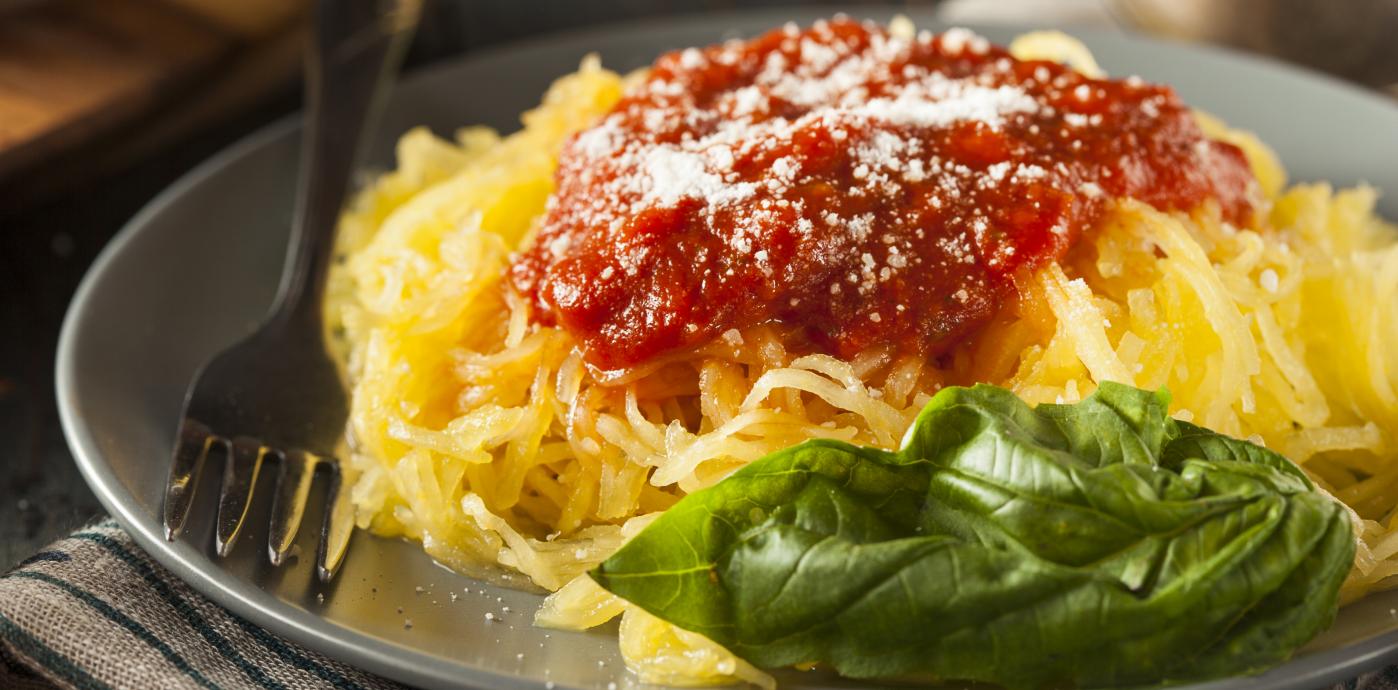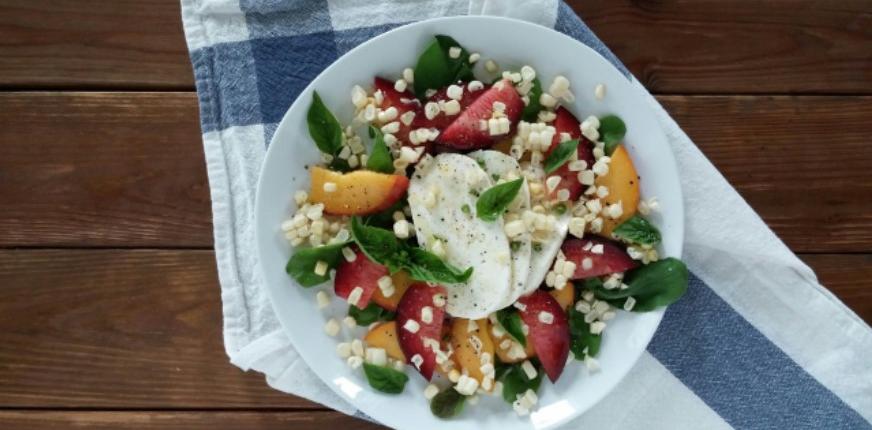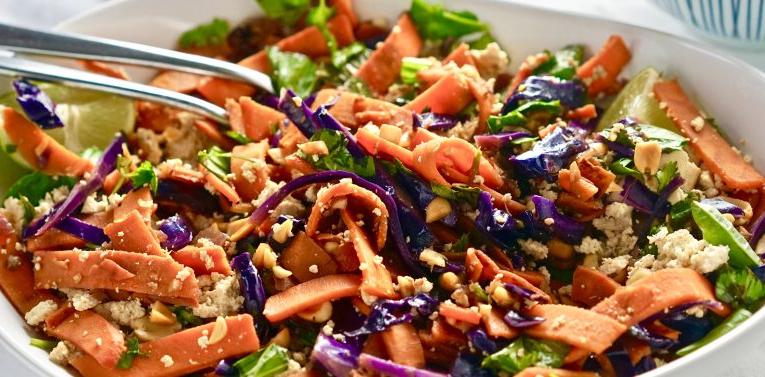Did you know that August is Kids Eat Right Month Its led each year by the Academy of Nutrition and Dietetics to promote healthy eating and active lifestyles for children of all ages. As you may know, kids aren’t always willing to try new, healthy foods despite their parents or caregivers best efforts. We recently featured how Oldways African Heritage & Health team is adapting the A Taste of African Heritage curriculum for children. Specifically, we focused on how to introduce millet, which is unfamiliar to most kids, in an appealing, familiar way. To expand on that theme, we turned to our panel of experts for their tips to introduce new foods to kids. Read on for kid-friendly recipes and ways to get children excited about trying and preparing new foods!
Ask the Experts, Introducing Healthy Food to Kids Edition
Engage the senses. I think you can introduce kids to new foods in two different ways. First, expose them to the food in a sensory way. Let them feel it, taste it, smell it, and see it at the table. For example, cook millet as a side dish or in a soup, so they can see the grains of the millet. Even if they don’t want to try it, they will become more familiar with it. And second, try including it as an ingredient in smoothies or favorite foods. They may not know they are eating it, but you can gradually point it out: Did you know I put some millet in those mufins you had last week Thats the same thing that is in this pilaf for dinner tonight. Bonus Recipe: Blueberry Millet Mufins.
Sharon Palmer, RDN, The Plant-Powered Dietitian, author of Plant-Powered for Life, SharonPalmer.com.
Get your kids in the kitchen with you. Children are much more likely to try a new food when they help prepare it. Even little kids can stir and add ingredients, while older children gain confidence as well as cooking skills when trusted with using ovens and knives. Forget the Clean Plate Club, try the One Bite Adventure: Introduce your family to new foods one bite at a time. Have everyone participate. They dont have to love everything, they just have to try it. Multiple studies indicate we have to taste something at least 10 times before it becomes habit. Its all about making cooking and eating together positive for everyone, from picky kids to frustrated parents. This Hold the Egg Salad aka Vegan Eggless Salad (courtesy image below) is quicker to make than traditional egg salad: creamy, comforting, easy, and no-cook. it’s the tofu recipe the whole family can love.
Ellen Kanner, Hungton Posts Meatless Monday blogger, author of Feeding the Hungry Ghost: Life, Faith and What to Eat for Dinner and Oldways Vegetarian Network advisor
One step at a time. To remove the intimidation factor that picky eaters may experience when new foods land on the dinner table (especially vegetables!), I advise parents to take baby steps toward acceptance by first offering familiar fruits and vegetables at every meal. An example would be a few sliced strawberries and some baby carrots with dip. To expand upon that strategy, I also suggest parents offer two veggies when possible (perhaps carrots and broccoli) and say something like: Do you want broccoli or carrots with dinner or both Giving children a variety of choices and making those choices healthy provides the control they crave, and it keeps parents in the drivers seat allowing them to ultimately decide what ends up on the family table. It’s also important to give picky eaters preparation options. While steamed carrots may seem icky to some kids, roasting those same carrots to bring out their naturally sweet flavor may be more appealing.
Liz Weiss, MS, RD, Host of the Lizs Healthy Table podcast and blog.
Mix with ingredients they love. Below is a healthy, kid-friendly recipe. In my counseling practice with kids, they LOVE tomato sauce and cheese. Pasta, pizza, or anything with the red sauce plus cheese. In this recipe I am using the tomato sauce and parmesan cheese with spaghetti squash (courtesy image below), which is not so kid-friendly on its own. Top with tomato sauce and parmesan cheese, and kids will love it and may not even notice it is not white pasta! Kids can even help with this recipe (except then they’ll figure out its not pasta! But it’s worth it: they’ll love scraping out the seeds). Very tasty, low calorie, and gluten free! And kids love it!!
BONUS RECIPE: Spaghetti Squash with Tomato Sauce and Parmesan Cheese
Ingredients
1 spaghetti squash
2 tablespoons extra virgin olive oil
½-1 onion, chopped (as you like) (optional)
1 clove garlic, minced
1 large zucchini or ½ eggplant cut into small pieces
1 red bell pepper, chopped (option for other veggies your child prefers)
1 tablespoon dried Italian herb seasoning, to taste, or other spices you prefer
Fresh ground black pepper and/or oregano, to taste
2 cups tomato/marinara sauce
Option to drizzle with fresh parmesan cheese
Directions
- Pierce the shell of the spaghetti squash and place in a microwave-safe dish; cook in microwave until soft (approximately 12 minutes). Can also be cooked in oven, at least 35-40 minutes. Slice in half lengthwise and remove the seeds. Use a fork to remove the fresh of the squash from the shell and place into a bowl; with the fork and separate strands.
- Heat the olive oil in a skillet over medium heat. Cook and stir the onion in the hot oil until just tender, about 3 minutes. Add the garlic and continue cooking and stirring another 3 minutes. Stir the veggies into the mix. Season with your favorite seasoning.
- Pour the tomato sauce into the skillet. Continue cooking just until the tomatoes are warmed. Add the squash to the skillet and toss until evenly mixed. Remove from skillet and toss again to serve. Drizzle with parmesan cheese.
Lisa R. Young, PhD, RD; Adjunct Professor of Nutrition at New York University, www.portionteller.com
Use unique ingredients. Here is a recipe for Raspberry Fudge Cake from my blog. I’m not much for sneaking in fruits and vegetables, but I am all for increasing the nutrition in everything my family eats, including desserts. Raspberry Fudge Cakes secret ingredient is black beans. It’s topped with fresh raspberries, which adds to the fruit and vegetable content. Each serving provides about 25% of the Daily Value for fiber and seven grams of protein, which is decent for a dessert. In all honesty, when I first made this dessert, I didn’t tell my kids what was in it because I thought they would balk. They didnt! Now, they even request this instead of boxed brownie mix. That’s an achievement!
Elizabeth Ward, MS, RD, author of Expect the Best, Your Guide to Healthy Eating Before, During, and After Pregnancy, www.betteristhenewperfect.com
Take a field trip. Whether you have a picky eater or an adventurous one, introducing new foods to children can be a challenge. But kids are much more likely to try something new when given the opportunity to help grow, shop, or prep feld trip time! Take your little ones with you to the grocery, farmers market, or community garden and let them select one new type of fruit, vegetable, or whole grain. At home, talk about its color, shape, the sounds it makes when you break it or bite into it, or, if theyre a bit older, talk about how it grows and why it’s nutritious. Then and a recipe (like my colorful and kid-friendly summer corn, stone fruit, and mozzarella salad courtesy image below) and prepare it together using age-appropriate tasks. Cooking with your littles is not only fun and educational, it instills healthy habits at a young age and sets them up for long-term health benefits!
Heather Goesch, MPH, RDN, LDN, nutrition consultant and food blogger at Heather Goesch Nutrition, and contributing author to Food & Nutrition magazine; www.heathergnutrition.com
Add new foods for health and sweetness.
- My Black Bean Brownies are about as healthy as a brownie can get, with 2 grams of fiber and 3 grams of protein per serving. They are also gluten-free, and I’ve served them to dozens of kids over the years, and not one has ever complained!
- I add a can of pumpkin puree to my turkey chili, and it adds a rich, almost sweet kid-pleasing flavor. The chili provides 180% DV vitamin A, 10 grams of fiber, and 22 grams of protein per serving, and it’s a family favorite!
Janice Newell Bissex, MS, RDN, Culinary Nutrition Consultant and Author at www.JaniceCooks.com.
Exploit versatile veggies. Use up that extra zucchini in this rich chocolate cake! It’s surprisingly moist, delicious, and so cake-like! Show kids how versatile even veggies can be and get in the kitchen to whip this up with them! Memories in the making, I think yes! Bonus resource: 6 Life Skills Kids Gain In The Kitchen.
Elizabeth Shaw, MS, RDN, CLT, Nutrition Communications Consultant at Shaw’s Simple Swaps, Fertility Nutrition Expert at BumpstoBaby.com, Co-Author of Fertility Foods.
Lead by example. To introduce new foods to kids, serve them with foods that you know the child likes and will eat. Having a plate of completely new foods will overwhelm and likely won’t be accepted very well! I don’t agree with sneaking vegetables into foods or playing games with food, just with consistency and good modeling by parents and caregivers. For example, if you say that you hate mushrooms, I believe your child will be more likely to reject mushrooms based on your dislike of them. Alternately, if your child sees you eating a wide variety of foods, they’ll probably be more likely to accept a wide variety of foods. Making rejected foods in different ways can help too: if your child doesnt like boiled broccoli, try roasting it. It sometimes takes children up to 20 tries to accept a new food, so be patient. The last thing Don’t make a big deal out of kids eating. If you make it a big deal, it will become one. Dont scold or praise their eating, and dont force them to eat or sit at the table until they clean their plate. One recipe that I love is my macaroni and cheese with squash. Kids love mac and cheese, and the butternut squash makes it sweet and delicious! Using veggies as noodles, like in my sweet potato pad thai (courtesy image below), is also a great strategy.
Abby Langer, RD, owner of Abby Langer Nutrition in Toronto, Canada
Make it a game. Whenever I am introducing new foods to kids, I let them enjoy the experience in a way that is comfortable for them. I like to add a fun game element to trying new foods by providing an activity sheet to learn about all parts of this new food. They have a mission to become food explorers. Some questions may be like: What color is it Is the food hard or soft Is this food sweet or sour I encourage children to go at their own pace. As they go through these food-exploring experiences more and more, their confidence begins to build with trying new foods. I once worked with a child who would only go as far as touching the different foods with one nger in the first class and progressively smelling the foods, licking the foods, to then taking a bite of the new foods introduced in the classes. Continuous exposure of new foods with no pressure around the situation I have found successful.
Bonus Tips and Recipes
- I sneak chickpeas into a lot of my recipes. It adds plant-powered protein and fiber. No one (kids or adults) even notices chickpeas in my Peanut Butter Chocolate Chip (Chickpea) Cookies and Peanut Butter Cookie Dough Cups.
- My Flourless Chocolate Peanut Butter Mufins are a great hands-on recipe for kids to gain experience in the kitchen. It is a one-bowl recipe where kids can practice measuring and mixing ingredients.
Julie Harrington, RD, Culinary Nutrition Consultant of RDelicious Kitchen
Put a new spin on pizza. This watermelon pizza (courtesy image below) with goat cheese topping is a great way to get kids to eat more fresh fruit with the goodness of dairy nutrition. Also, a good recipe to use up strawberries that are perhaps overripe. This recipe calls for a cooked strawberry sauce that acts as the tomato sauce on the pizza. Grapes are the crust, and kids can decorate with other fruits as they would add toppings to pizza!
BONUS RECIPE: Watermelon Pizza
Ingredients
1 cup whipped topping, thawed
4 ounces honey goat cheese log
1 lemon, zested
½ teaspoon pure vanilla
1 tablespoon unsalted butter
1 pint strawberries, hulled and sliced
2 tablespoons honey
2 tablespoons sugar
½-inch round slice of watermelon
1 cup seedless green grapes
1 cup blackberries
Directions
- In a mixer or food processor, combine whipped topping, goat cheese, lemon zest and vanilla. Combine until smooth and light. Reserve in refrigerator.
- In a large sauté pan, melt butter on medium heat. Add strawberries and sauté for 10 minutes or until they begin to break down. Add honey and sugar. Continue cooking for another 3-4 minutes. Remove from heat, refrigerate until completely cooled, approximately 30 minutes.
- When strawberry mixture has cooled, spread whipped topping evenly across watermelon slice. Place grapes in a ring around the outside of the slice creating a crust.
- Scoop strawberry mixture into the middle of the ring and spread evenly. Top with blackberries and slice like a pizza (or slice first and then add the toppings).
Carolyn O Neil, MS, RDN, author of The Slim Down South Cookbook and ONeilOnEating.com food blog
Work together. One of the best ways to get kids to try a variety of foods is to invite them to join in the process. Share the recipe with them and take them along grocery shopping. Let them explore the store to and the ingredients and have them push their own cart, weigh the produce, and bag the groceries at the check-out counter. Once home, give them tasks that are age-appropriate, allowing the kids to measure, cut, and cook the recipe. You’ll be surprised how many new foods your kids will taste when they helped make it. I recommend choosing recipes that combine foods. I make many one-pot meals in slow cookers. Time is always a problem in my home with the numerous kid activities. I and slow cooker recipes more forgiving with my busy family dinner is always ready and warm when I return home. One-pot meals are also a fabulous way to add in nutrient-rich ingredients kids may avoid, such as mushrooms, beans, onions, and other vegetables. A favorite one-pot meal at my house is Slow Cooker Chicken Enchilada and Black Beans (courtesy image at top).
Kathy Siegel, MS, RDN, CDN Nutrition Consultant at Triad to Wellness












Leave a comment